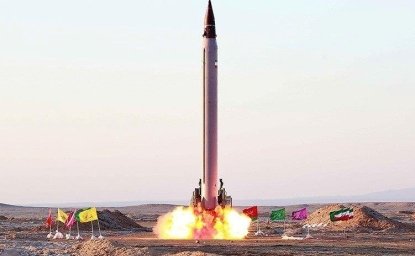Ami Pedahzur, deputy chair of the National Security Studies Center at Haifa University and a world renowned expert on suicide terrorism, has researched and written extensively on what he considers a social political phenomenon, examining its global history while isolating the variables that are prevalent among case studies.
Pedahzur's presentation emphasized the instrumental nature of suicide terrorism. Terrorist organizations employ this horrific tactic because their leaders believe that it is an effective instrument in furthering their political objectives. Suicide terrorism is used not only to destroy a specific target, but, more broadly, with the intention of creating an atmosphere of terror. The terrorists are motivated by the belief that the collective public anxiety generated by suicide bombings will translate into political gains for their organizations.
Suicide bombing as a phenomenon has grown exponentially over the last twenty years – from one occurrence in 1982 to seventy-one in 2003. (The data for 2004 are still being compiled.) The Middle East has experienced the sharpest rise in suicide terrorism in recent years and is now perceived as a Middle Eastern phenomenon linked to Islamic extremism. But Pedahzur noted that suicide terrorism is not solely an Islamic phenomenon. It gained prominence as a tactic not in the Middle East, but in Sri Lanka by Tamil separatists, and has also been employed on occasion by secular groups, such as the Palestinian Fatah, a nationalist organization. Furthermore, Pedahzur emphasized that religion cannot be treated as an independent variable in the analysis of suicide bombers. "Islam is not the factor that explains suicide terrorism and treating it as so is misleading," Pedahzur cautioned.
Drawing on his comparative case studies, Pedahzur said that 95 percent of suicide attacks worldwide were initiated by organizations (not by individuals or so-called "lone wolfs"). A successful suicide campaign requires individuals willing to perpetrate the acts, but also a community that will support them. Hence, according to Pedahzur, the terrorist organizations have glorified suicide missions and have sought to create "a culture of death" within the community. They do so by capitalizing on the community's objective or subjective belief that it is the target of discrimination and violence, and the resulting sense of hopelessness and powerlessness. The terrorist organizations promote suicide terrorism as a mechanism to empower these disaffected communities. Again referring to the often misunderstood connection between Islam and suicide terrorism, Pedazhur said, "Islam has no culture of death embedded in it. Organizations market this culture of death by using religious symbols because it helps them achieve their goals."
In addition to the importance of the organization and the community that supports it, Pedazhur has also studied suicide terrorism at the individual level. What makes the suicide bomber volunteer? Early studies attempted to profile the suicide bomber yet most studies concluded that suicide bombers exhibited no distinct features. "This is a social political phenomenon and it has very little to do with personal characteristics," Pedazhur concluded. He argues that there are two predominant types of individual motivations---crisis and commitment. It can be a communal crisis or a personal crisis. "We see that the best predictor is taking revenge. When you see a loved one getting killed, it is a very strong predictor
we see this everywhere." Now Pedazhur is studying the social network as a variable. Several case studies suggest that close familial or friendship bonds are prevalent among suicide bombers.
Pedazhur concluded that suicide terrorism has worked in the past. It drove the United States, France, and Israel from Lebanon in the mid-1980s, and will continue to be employed by groups when they believe it will be effective. Conversely, suicide terrorism will decline in incidence when the terrorist organizations conclude that it is not effective as an instrument or if its employment will undercut their political agenda.
This meeting, jointly sponsored by the Woodrow Wilson Center's Division of International Studies and Middle East Program, the RAND Corporation, and the U.S. Army's Eisenhower National Security Series, was part of an ongoing series on terrorism and homeland security.
Related Links



